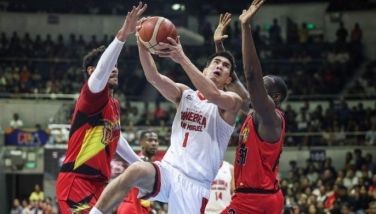The guerillas of Carcar, Cebu
Carcar, Cebu was the birthplace of patriots who defended our country during the Japanese occupation. Others survived but there were those who died for God and country.
Many of them forgotten, but there are those whose names are imprinted in our government records, their heroism and sacrifices illustrated. Among the many:
Amando Satorre, Ireneo Medel, Maximo Satorre and Eusebio Rizada, on April 15, 1944, were apprehended and tortured because they were part of the resistance movement. They were all residents of Carcar, Cebu.
On the same day, Laureano Raponoya, a suspected guerilla member was accosted, then delivered to the Japanese Army occupying Carcar, Cebu.
A certain Segundo of Pinamungahan, Cebu was apprehended, tortured, and killed on March 1944 for being a guerilla volunteer guard.
The man responsible for all the acts of treason was a Cebuano who, on March 25, 1942, was inducted into the USAFFE (United States Army in the Far East). He claimed he was arrested four months after, with forty-two others, by the Japanese and was tortured. The Cebuano-turned-spy for the Japanese Army said that after his torture he was hospitalized for two months.
The spy claimed he was forced to join the Puppet Philippine Constabulary. Witnesses testified that the former Cebuano USAFFE soldier, in the pursuance of his being a Japanese constable, killed the patriots from Carcar by bayoneting them and by further slashing the knees of one so as to make the latter's body fit into the grave.
After the war, the spy was prosecuted for the complex crime of treason with murder. After the trial, he was convicted by the Peoples Court, imposed on him was the penalty of death and a fine of ten thousand pesos.
The spy appealed his conviction by the People's Court in Cebu and went to the Supreme Court. The Supreme Court in an en banc decision on January 7, 1949 modified the penalty, that instead of death, the penalty of reclusion perpetua was imposed.
The reason why it was changed was because under the Judiciary Act of 1948 approved on June17, 1948, provides that whenever a judgment of the lower court imposes the death penalty, the case shall be determined by eight Justices and that when the eight Justices fail to reach a decision the penalty next lower in degree than the death penalty shall be imposed.
The spy was assisted by lawyer Felix D. Agcaoili (admitted to the Bar on December 31, 1925) in his case that reached the Supreme Court, who saved the man's life from the death penalty.
During World War II, Carcar had occupation mayors, men who were forced by the Japanese Imperial Army to govern towns and cities. They were Vicente Rama, a member of the Philippine Congress (and also appointed before the war as the second mayor of Cebu City), Arsenio Noel, and Vicente Enriquez.
The guerillas of Carcar, Cebu also had their own mayor. His name was Atty. Abundio A. Aldemita (he became a lawyer on November 3, 1930). Atty. Aldemita survived the war, for his bravery the grateful people of Carcar elected him as their mayor. In 1964 the following were the members of the Municipal Council of Carcar: Atty. Dativa Alfafara, Abuncio Cano, Ramon T. Barcenilla, Ceferino G. Alesna, Dominador Alcoseba, Ildefonso O. Ybud, Vicente M. Florido, and Porferio Gantuangco.
- Latest























